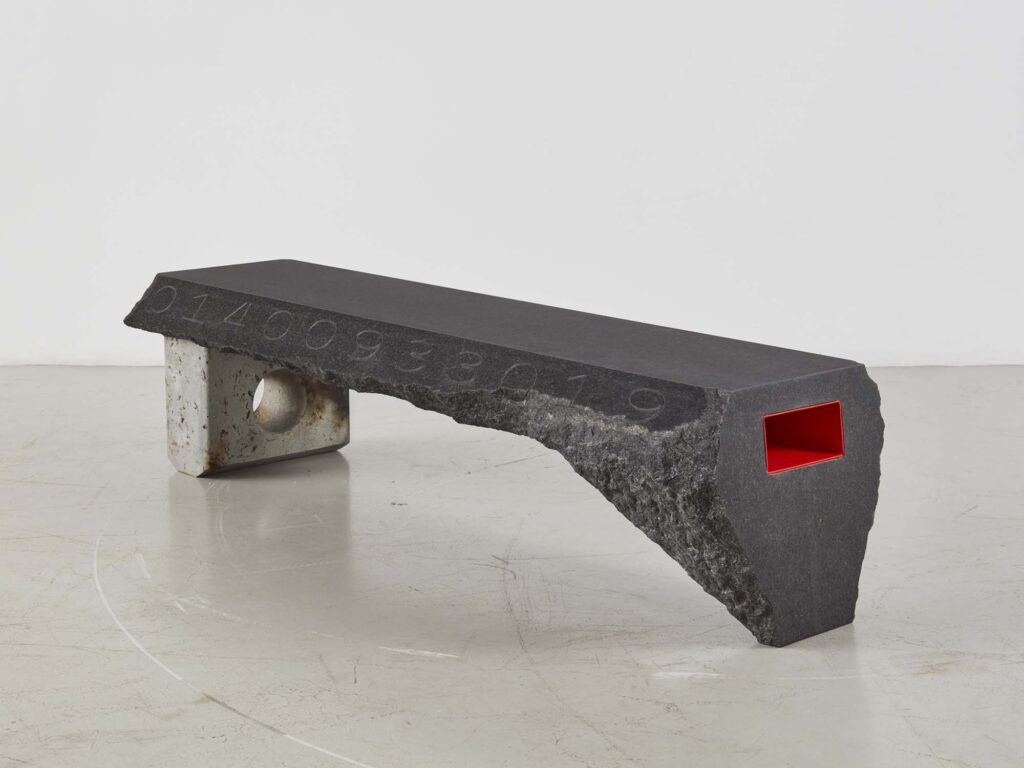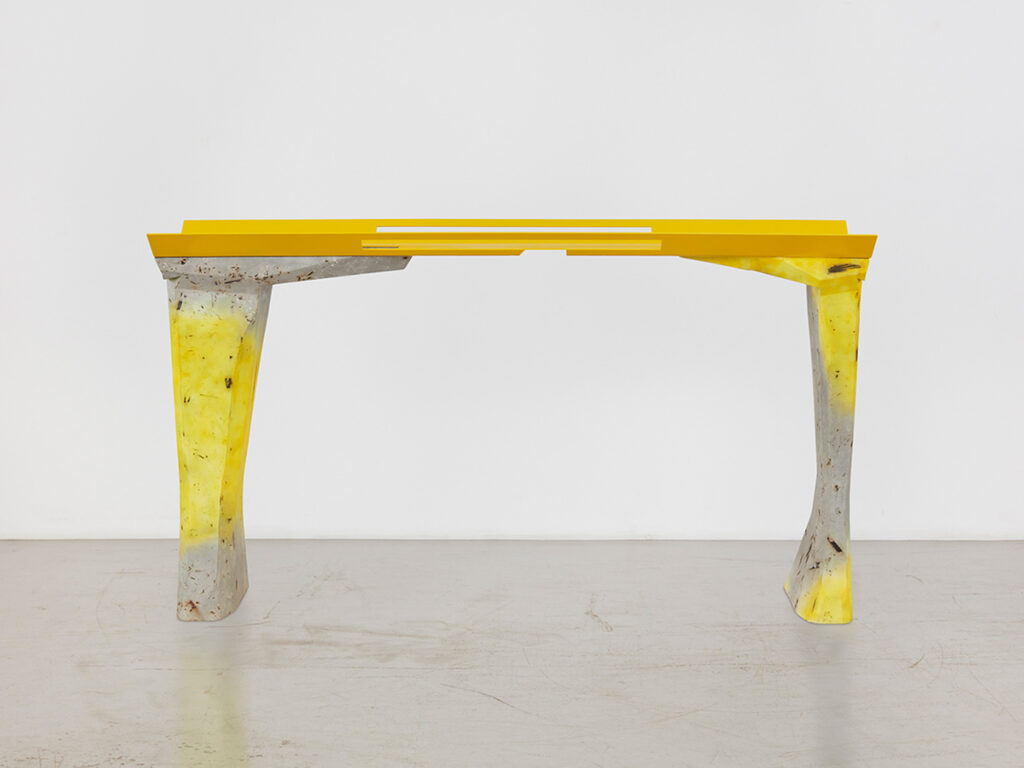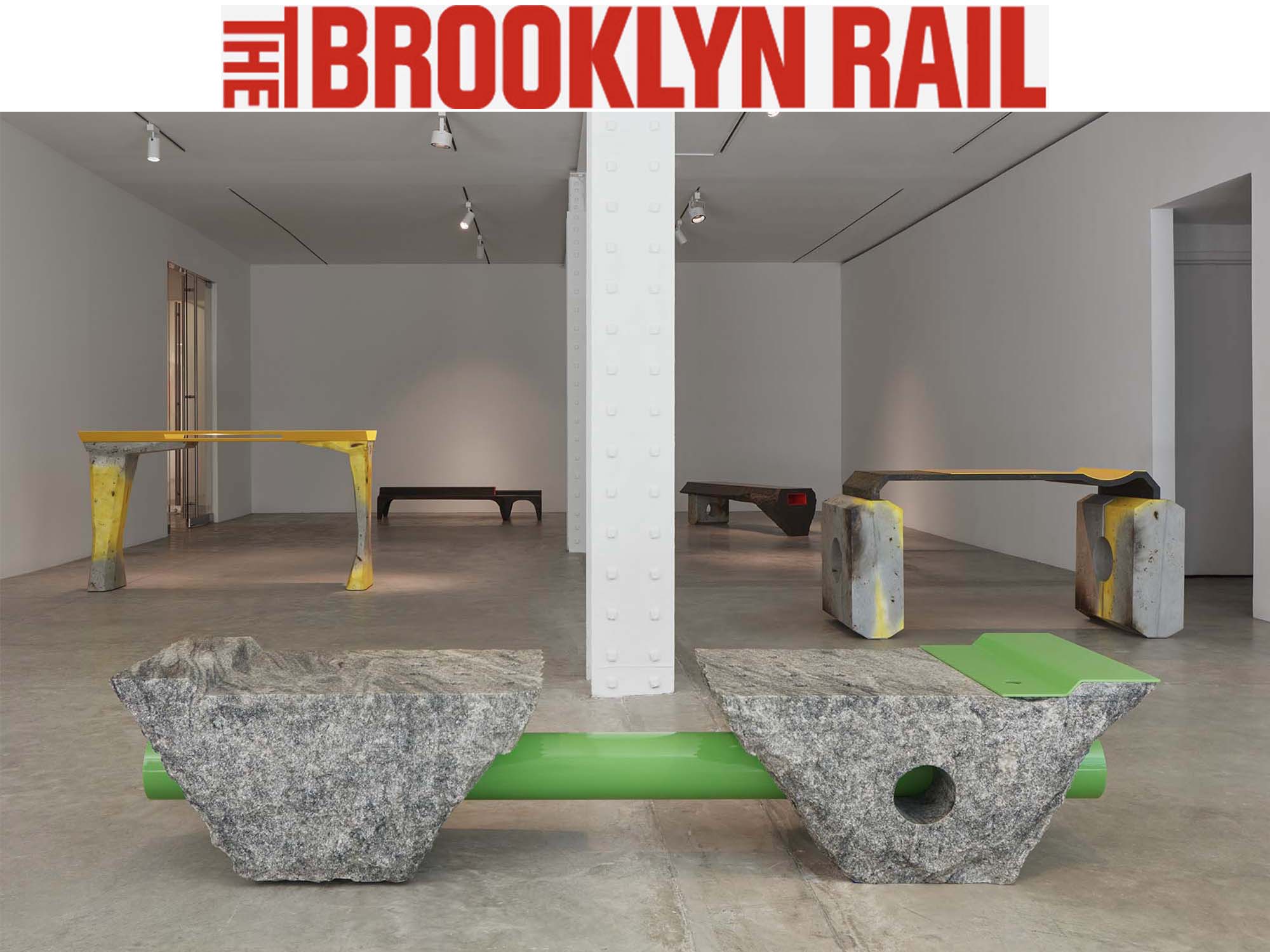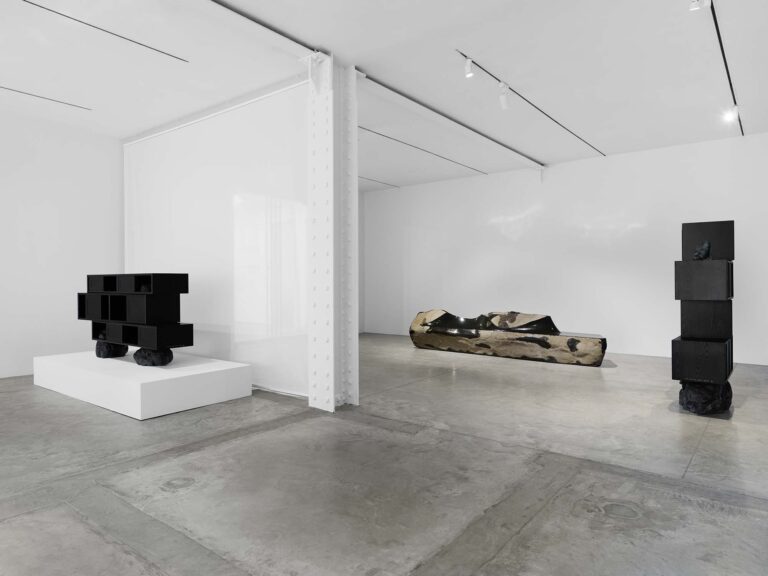By Joel Danilewitz
Whether through his art or his fashion label, A-COLD-WALL*, Samuel Ross’s approach to design and craft reflects a self-conscious attitude towards post-industrial social relations. In COARSE, his second solo show at Friedman Benda, the UK-artist and cultish fashion designer presented a selection of brutalist sculptures meant to inspire tension within pre-ordained notions of globalist manufacturing. Fusing organic materials like fired honey and milk to reinforced concrete and painted steel, Ross’s minimal works allude to our amoebic search for nourishment in an austere and indifferent environment.
Before Ross founded his award-winning label A-COLD-WALL*, he was a protégé to Virgil Abloh, the late fashion designer and luminary behind brands like Off-White. Abloh’s tenure at Off-White and later as the head of Louis Vuitton menswear sought a deconstructed street-style that threaded critiques of capitalist logics throughout each collection. Like Abloh, Ross is obsessed with clashing signifiers, juxtaposing luxury aesthetics with the brute force of their creation.
Ross’s fascinating work FIRE OPENS STONE (2022) lays bare some unsettling truths about our contemporary addiction to smooth, sleek surfaces. This black oblong stretches out to support itself on one side, while a small gray pillar of reinforced concrete props up the other. Its polished surface, made from Nero Africa granite, appears tranquil until one notices its deteriorating edges. This granite carries with it the fraught history of mining practices in South Africa; Nero Africa, or Nero Impala, originates in the northeastern region of the country.
Across its slanted plane facing the audience—the side one would swing their legs over if they were to sit on it—Ross inscribed an eleven-digit number. Despite the genial intention of its bench-like form, the number invokes a barcode, just one digit short of a Universal Product Code. An opening in the right leg, a red, rectangular metal cleave set into the black stone, signals function with its USB-A like shape. Ross has mentioned W.E.B. Du Bois’s theory of double-consciousness as a framework for creating these attractive yet distant works. The work strains to be both an emblem of coziness and something further out of reach, harkening to more insidious practices of design.
The curation, organized by the artist and the gallery, also illuminates the artist’s processes for deconstructing and designing these works. Opening with stiff yet homely creations like FIRE OPENS STONE and BORDER (2022), the sculptures begin to peel back layers of the production process as one moves towards the southern edge of the gallery. Turmeric dusts gray concrete in ANAESTHESIA II (2022), its shape similar to a workbench. This along with the exposed legs which the artist lightly covers in yellow invoke a construction site, which he cordons off in a hazardous yellow. However, the metal table placed on top coaxes these elements into uniformity, though not necessarily unity: a placid face reified through bulk objects and familiar spices.


Contrasting with these brusque edifices, a room filled with sketches and drafts of Ross’s statues imbues the exhibition with warmth. One gets a better sense of the “organic” influence that Ross mentions through these sketches. Ross expresses the statues’ potential for dynamism through watercolor and charcoal figurations, unfinished and coarse—open to its own contortions.
At COARSE, Samuel Ross subverts the rigid and alienating features of production, bringing us into a new kind of home, fashioning the indifferent objects of our post-industrial, post-human world into curiously welcoming statues. Viewers come away skeptical of design concepts that privilege a burnished facade, critical of capitalist logics that obscure production, that which cements over the sweat and blood baked into everything around us.










